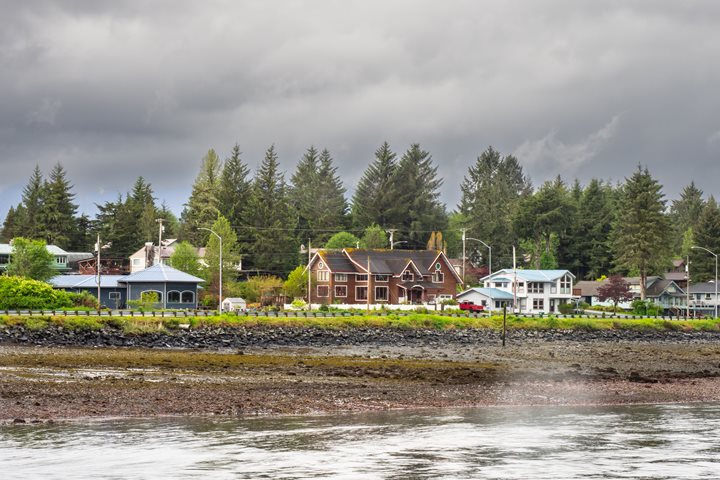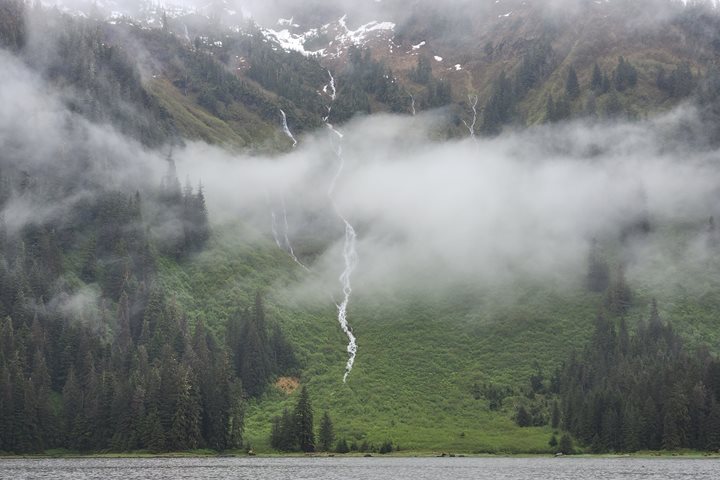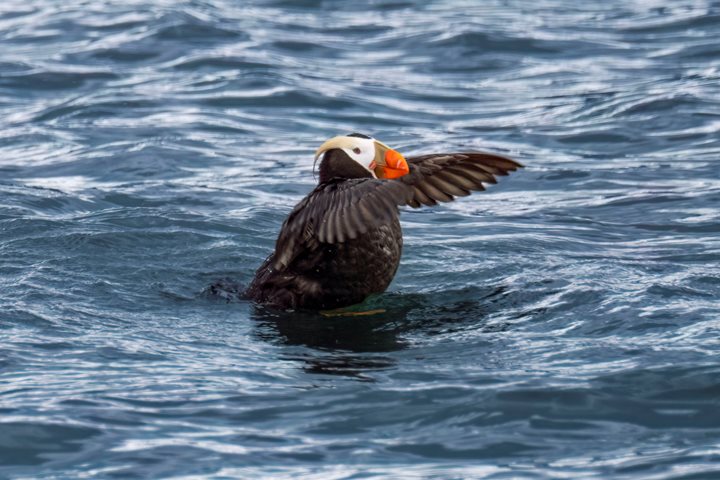The morning of our fifth day on National Geographic Sea Bird started with a bang. We had incredible weather, lots of sea otters, and flat calm conditions. Our trusty ship had been steaming all night from Peril Strait, westward through Icy Strait, finally arriving at the mouth of Idaho Inlet on the north end of Chichagof Island. We would spend a couple of hours exploring, watching the otters, and searching for other critters in this beautiful wilderness environment!
Finally, it was time for breakfast, and to start heading to the place for our morning’s activities–expedition landing craft cruises exploring the Inian Islands and its diverse wildlife. It was not a great distance to the anchorage, so by 9:30 we were anchored and ready to go! So as the expedition boats filled, and then departed from the ship, there was a sense of anticipation from everyone aboard.
Within a few minutes every boat was encountering sea otters, bald eagles, and numbers of northern sea lions! The reason this diversity of life is in this area is the extreme tidal currents that sweep through, and around, the channels and islands in the area, creating a rich marine environment with a tremendous amount of available food!
There were more and more sea lions, sea otters, bald eagles, and other birds along the way, utilizing this incredible food source. But eventually our travels took us to an area where in the past we have seen one particular charismatic bird, the tufted puffin, we were not disappointed! There were a number of puffins flying around our boats, and perched on the cliffs above; what a great treat!
As the last cruise returned to the ship we prepared to eat lunch, lift anchor, and make the short voyage to George Island for walks and another opportunity to kayak in this amazing Southeast Alaska environment. This island has a lot of history attached to it from the period of WWII. There was a perceived threat from the Japanese moving from the outer Aleutian Islands into mainland Alaska, and this area was thought of as a possible point of entry! So a large gun, six inch and 50mm, was placed on an elevated point overlooking Cross Sound. Luckily the Japanese were defeated on the Aleutians, and the gun was never needed, and it was decommissioned long before the end of the war! But, this 18-ton weapon still remains in place till this day!
Soon it was time to head back to the ship, make our way to the small town of Gustavus to pick up our National Park Ranger and Cultural Interpreter, and get ready for an exciting final day in Glacier Bay!






